The Principality of Andorra is a landlocked microstate in the Eastern Pyrenees, wedged between France and Spain. Considering its proximity to several metropolises, you’d think flying directly into the country would be extremely simple, but that’s not the case.
Strategic planning and at least one transfer is involved due to the absence of a direct airport in Andorra.
While the picturesque landscapes and premium ski resorts are a quite a draw, getting here requires consideration of the nearest airports as well as infrastructural developments impacting accessibility.
In this guide, we’ll walk you through Andorra’s airport situation along suggestions on how to get here. This will minimise guesswork and ensure a well-managed holiday free of last-minute niggles.
Exploring Andorra’s Airport Situation
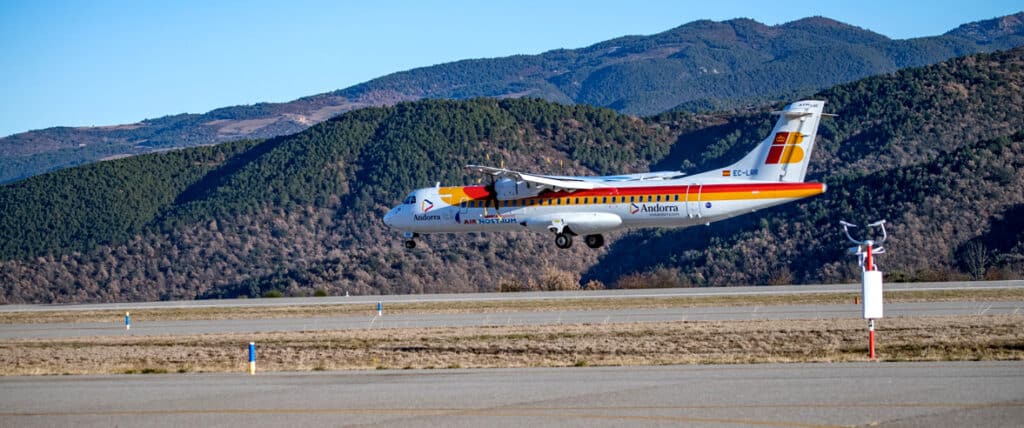
You might be wondering, why on earth doesn’t Andorra have an airport? Well, it’s complicated.
Andorra’s topography, characterised by rugged mountains and narrow valleys, has precluded the establishment of a traditional commercial airport.
This terrain requires precise technical specifications for any potential airstrip. Factors such as approach angles, wind patterns, and altitude need to be considered since they impact aviation safety and operation protocol.
While Andorra does not have its own commercial airport, it has adapted by leveraging the air transport infrastructure of neighbouring countries, ensuring that visitors can still reach its borders with relative ease.
Navigating to the Closest Airport to Andorra
So at least at this point in time, flying into Andorra for your next holiday is going to mean flying into either Spain or France first.
Depending on where you’re coming from, there are a few different ways of going about this. Here’s a list of the most popular airports that are proximal to Andorra.
Andorra–La Seu d’Urgell Airport (LEU)
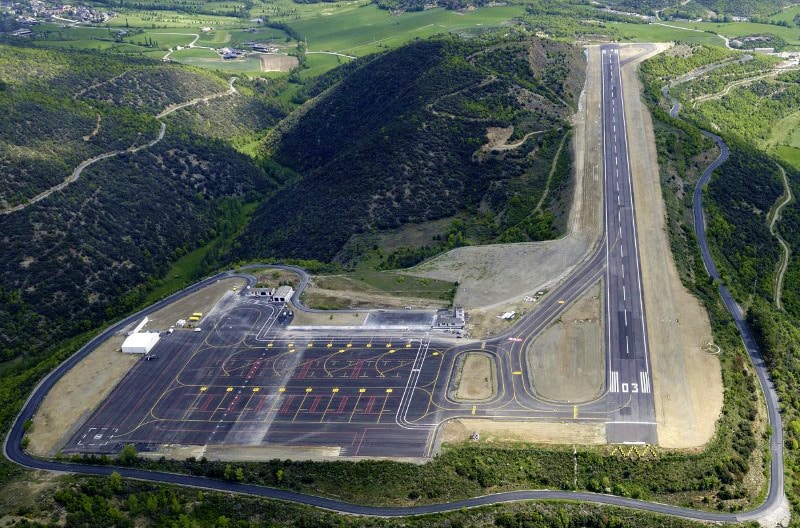
Currently, LEU is the nearest airport to Andorra, making it the go-to for many travellers due to its proximity. Only 18 minutes by car to the border makes this a very viable option.
The airport features a single asphalt runway (12/30) that is 1,400 meters long, catering to turboprop aircraft that operate the scheduled flights to and from Madrid.
The airport’s elevation at 800 meters above sea level requires pilots to be adept at navigating the unique approach paths influenced by the surrounding topography.
Toulouse-Blagnac Airport (TLS)

Toulouse-Blagnac Airport is a significant international gateway, equipped with two parallel runways (14L/32R and 14R/32L) and two shorter crosswind runways.
It serves a range of domestic and international flights, utilising advanced instrument landing systems for precise navigation and safety in diverse weather conditions, a critical factor for winter travellers heading to Andorra.
On good days, you can get from Toulouse airport to Pas de la Casa in under 2 and a half hours, but heavy snow, traffic or both can slow this down. Toulouse to Andorra transfers are easy to arrange, making this a great option to fly into.
Barcelona-El Prat Airport (BCN)
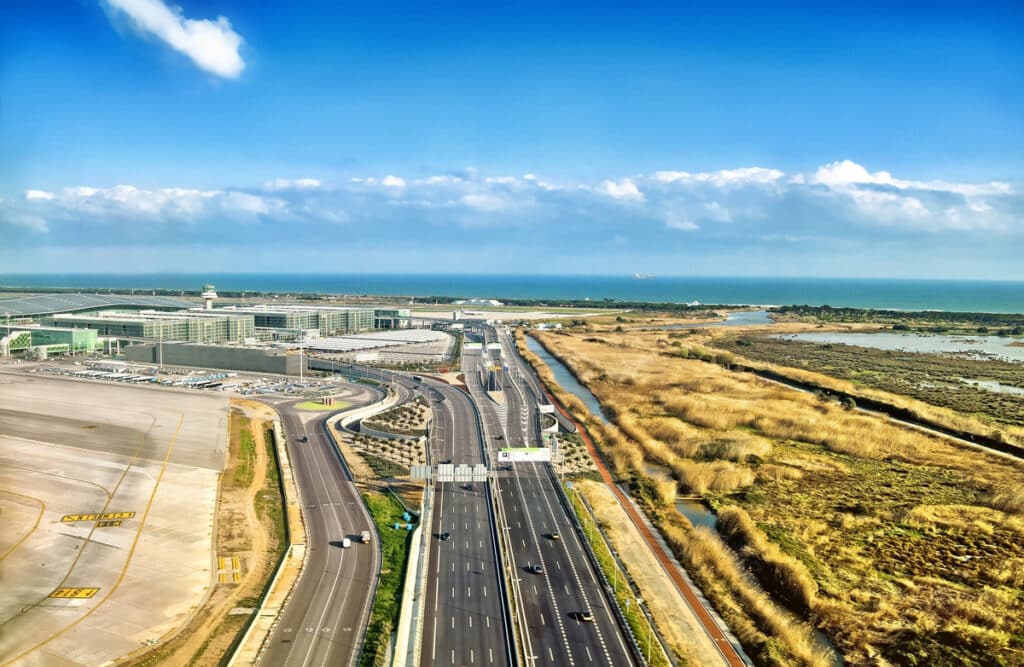
Barcelona-El Prat features two runways (07L/25R and 07R/25L), both over 3,000 meters in length, capable of accommodating large, long-haul aircraft.
It’s equipped with Category IIIb ILS on runway 25L, allowing operations in low visibility conditions—an essential feature for travellers concerned about winter fog and other seasonal disruptions. If you plan on renting a car for the drive up, this is a better option.
Similarly, getting a Barcelona to Andorra transfer is easy, with multiple options when it comes to which company you choose to work with. By bus, it’s around 3.5 hours, but by car, you can cut this down to 3.
A private shuttle can be a time saver here, as they know the roads and the traffic. They’ll usually make the journey, safely, within 2.5 hours.
Girona-Costa Brava Airport (GRO)
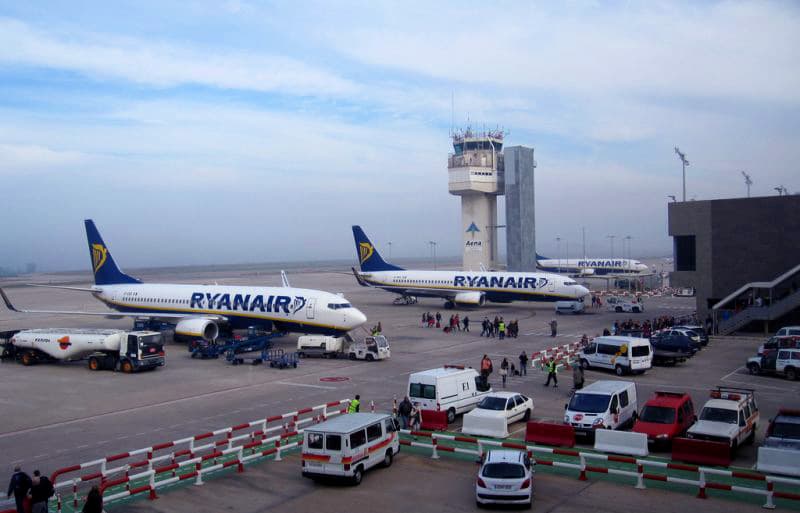
Girona Airport serves as a secondary hub to Barcelona but is equipped with a single runway (02/20) that is 2,400 meters long.
While it offers fewer connections, its facilities are capable of handling medium-sized aircraft, providing additional options for visitors who may prefer to drive to Andorra.
If you’re flying in from the UK, this can be an interesting option, but it’s worth noting that transfers to Andorra are nearly non-existent. You’ll need to rent a car for the drive up, which takes around the same amount of time as it would from Barcelona.
Airport Near Andorra: Evaluating Transit Routes and Modes
Choosing the best airport to fly into Andorra is not just about distance but also about the quality and reliability of onward travel options.
Some airports are better equipped to provide the latter, while others will require a bit of foresight and planning. Pre-booking your airport transfer to Andorra is always the way to go.
Seasonal Impact on Airport Operations
Flight operations to these airports are influenced by seasonal weather patterns. For example, Toulouse and Barcelona, with their advanced instrument landing system, are less likely to experience weather-related delays than smaller airports like LEU and GRO.
Similarly, if your flight is cancelled, the next flight may be scheduled for the day after or there might be a multiple-day wait time.
Comparing Ground Transport Options
The decision between taking public transport and hiring a car from these airports often depends on the final destination within Andorra, budget constraints, and the level of flexibility desired.
Scheduled bus services offer the convenience of direct routes, while car rentals provide autonomy and can be more economical for groups.
Cross-Border Connectivity
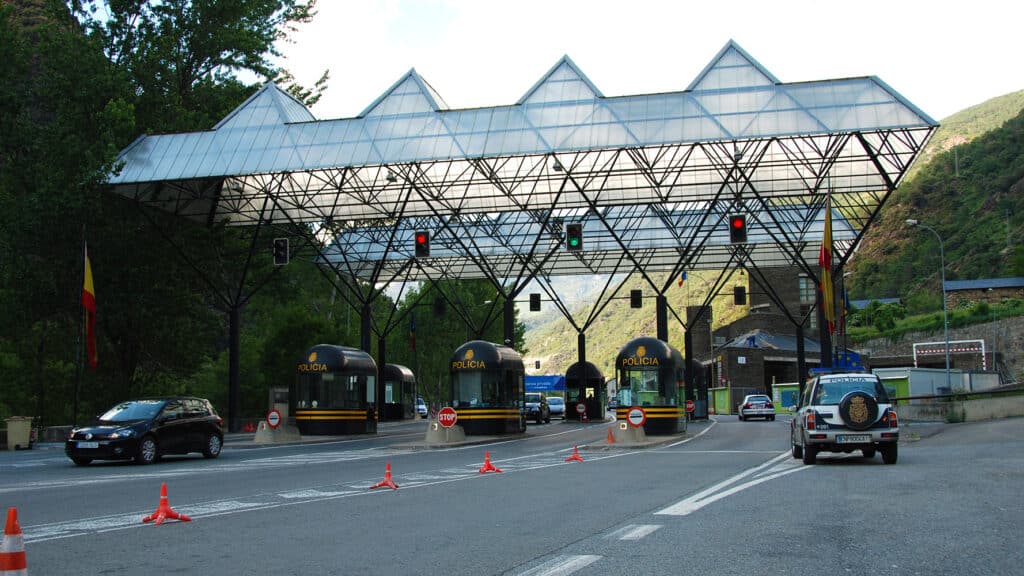
Travellers need to navigate cross-border protocols efficiently. Although there are no stringent customs checks between Spain, France, and Andorra, ensuring all travel documents are in order remains a necessity.
Since Andorra has transit agreements in place with Spain and France, it’s a lot easier for people arriving from European states to enter the country. That said, carrying your passport and a national ID card is recommended.
Future Prospects and Current Improvements
Andorra is not standing still when it comes to improving access to its territory. With millions invested towards the redevelopment of its critical infrastructure, the country is far from being the marginalised mountain landscape that it once was.
As home to the highest capital city in Europe with an annual footfall of 10.2 million tourists, the country is up there with Europe’s busiest holiday destinations.
Ongoing Developments at LEU
Plans to expand LEU’s capabilities with increased flight schedules and improved airport facilities could see this airport transforming into a more significant hub for Andorra-bound travel.
Air Nostrum understands the demand for winter tourism coming from the UK. There are plans for a London to Andorra-La Seu Airport flight, likely connecting via Madrid. Similar plans exist for a Majorca leg as well.
Anticipation of the National Heliport

The expected completion of Andorra’s national heliport by the end of 2025 will introduce a new dimension to travel in the region. The heliport is planned to be built very close to the Vallnord Ski Resort.
This heliport will need to be equipped with cutting-edge navigation and communication systems to handle the mountainous approaches, likely including GPS-based navigation aids and satellite communication links to ensure all-weather accessibility.
At around 30 minutes to transfer to the country from BCN airport, this could be a big time saving for tourists in the future.
Road Infrastructure and Public Transport Upgrades
Infrastructure enhancements, particularly the upgrading of CG-1 and CG-2 (Andorra’s main access roads), and an increase in the frequency of bus services during peak tourist seasons will play a significant role in streamlining the commute from neighbouring airports.
Over the past few years, these access roads have seen major works, and the flow of traffic has improved considerably.
Within the country, this is planned to improve even more, especially through La Massana, which is a key road for accessing the Arinsal ski resort.
Technical Insights on Andorra’s Transport Developments
The technicalities of Andorra’s transportation enhancements include not just physical infrastructure but also digital and operational advancements.
Planned improvements to the road network entail not only expanding capacity but also incorporating advanced weather monitoring systems to maintain clear routes during winter.
The public transport strategy may involve a real-time information system that provides updates on schedules and potential delays, allowing travellers to plan their journeys more efficiently.
Concluding Summary
The absence of a direct Andorran airport has necessitated creative solutions and the use of nearby airports, each with its technical merits and limitations.
Andorra–La Seu d’Urgell Airport currently offers the closest proximity, while larger hubs like Toulouse and Barcelona provide broader connectivity.
The upcoming national heliport and ongoing upgrades to the transportation infrastructure will significantly enhance access to Andorra.
Travellers can look forward to these developments with anticipation, as they promise to make the journey to Andorra more convenient than ever.
Until then, the combination of nearby airports and efficient ground transportation continues to serve the needs of visitors to this beautiful mountain principality.


